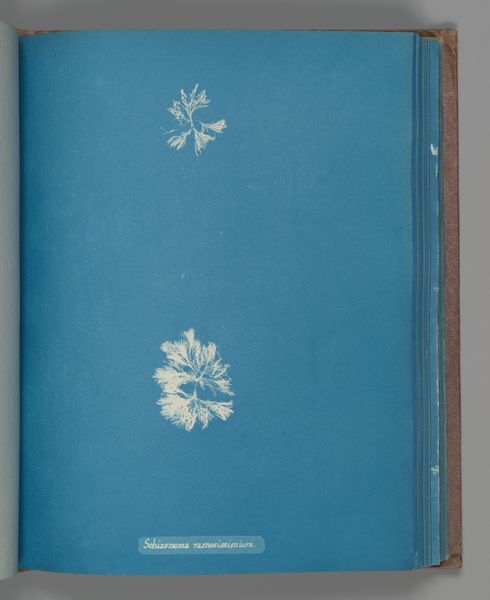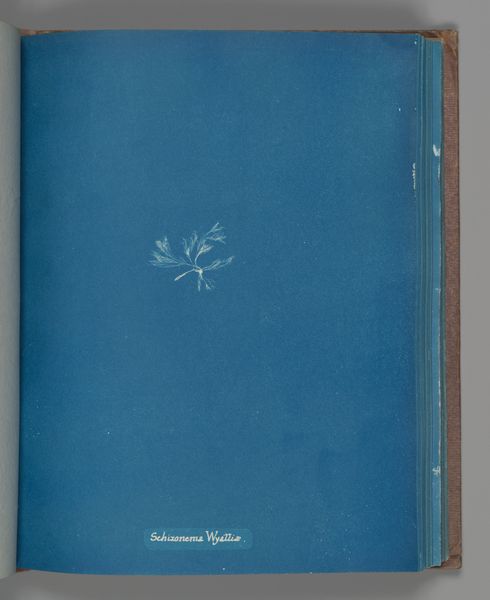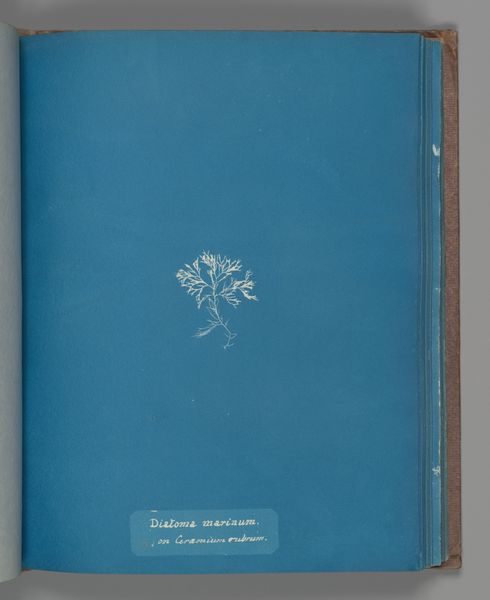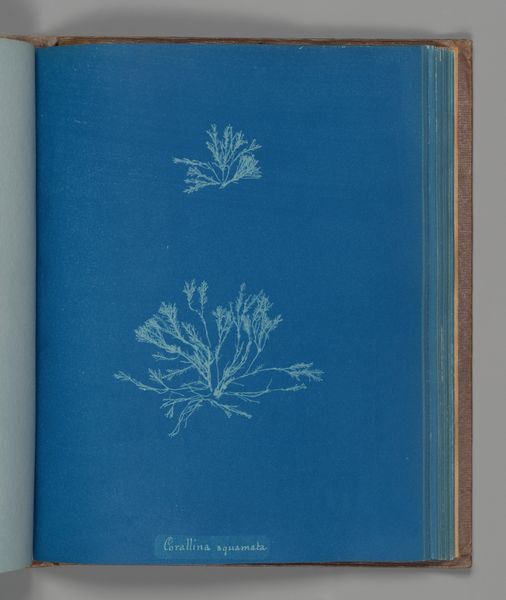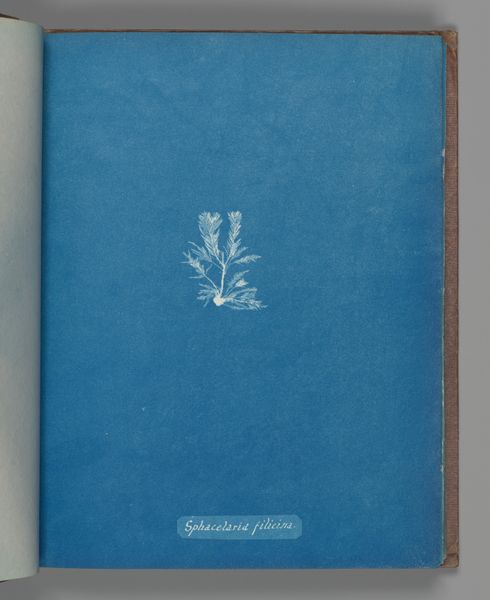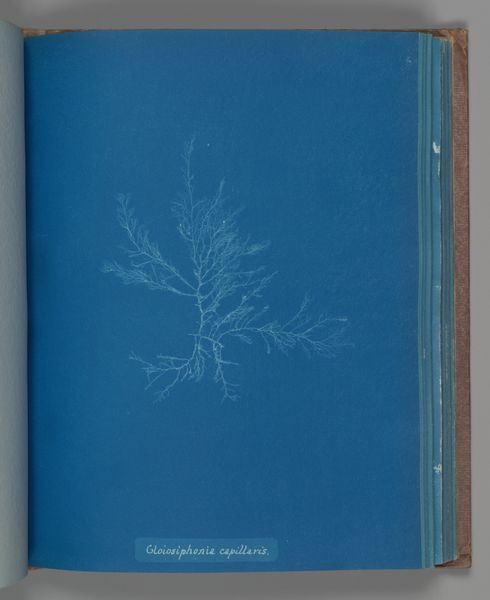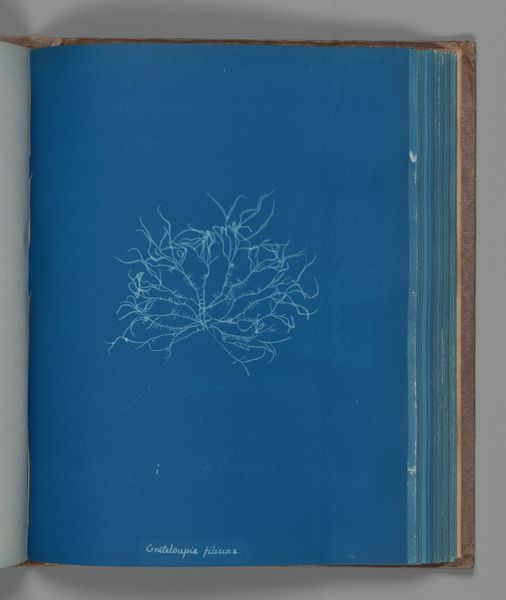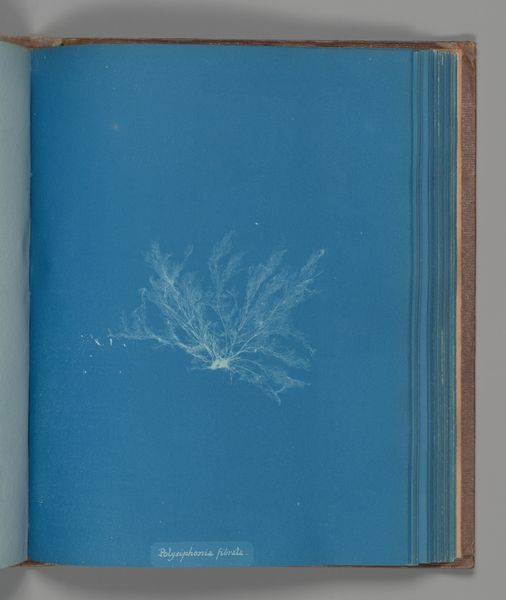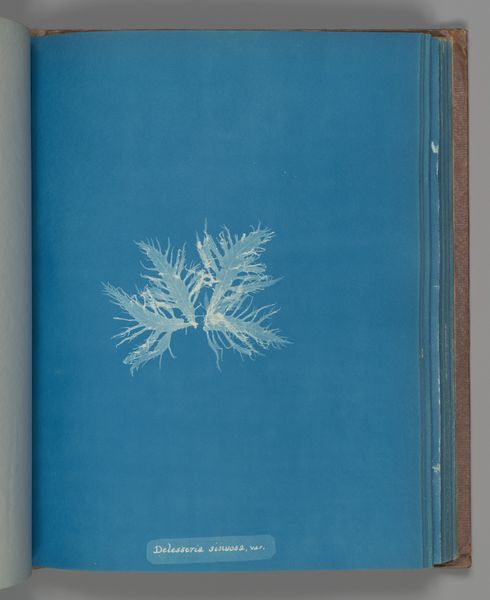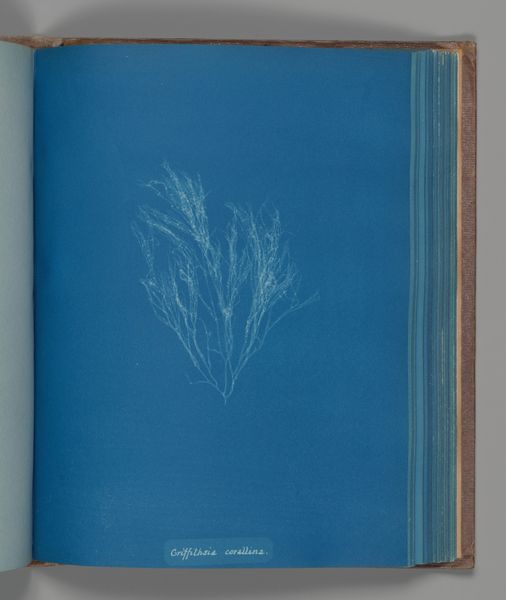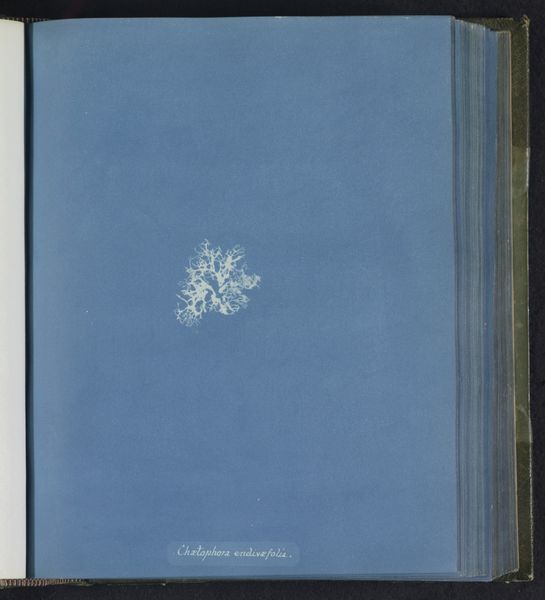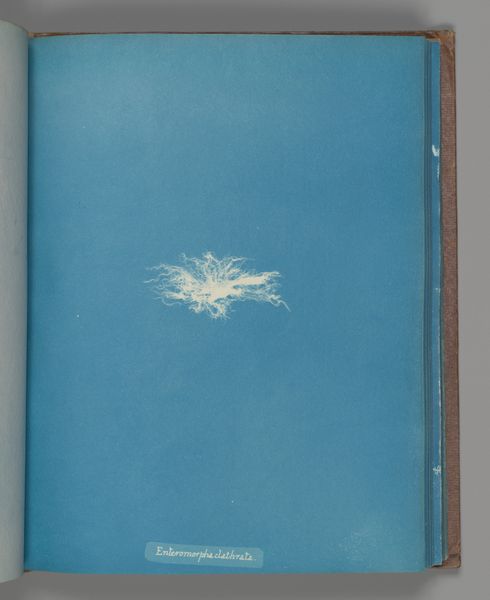
print, cyanotype, photography
#
aged paper
#
still-life-photography
#
homemade paper
#
paper non-digital material
#
paperlike
# print
#
book design
#
cyanotype
#
photography
#
printed format
#
book mockup
#
children publication design
#
plant
#
publication mockup
#
naturalism
#
publication design
Dimensions: Image: 25.3 x 20 cm (9 15/16 x 7 7/8 in.)
Copyright: Public Domain
Anna Atkins made this cyanotype of Cystoseira barbata, a type of brown algae, in the mid-19th century. What might seem like a straightforward botanical study is in fact a fascinating intersection of art, science, and the emerging role of women in intellectual life. Atkins, a British botanist, used the cyanotype process, an early form of photography, to document various algae species. In doing so, she became one of the first women photographers. The image itself, with its stark white form against a deep blue background, embodies the scientific desire for clarity and precision. At the time, scientific illustration was crucial for disseminating knowledge, and photography offered a seemingly objective way to capture the natural world. Yet, as a woman working in a male-dominated field, Atkins's work challenges the institutional norms of her time. To understand this image fully, we can explore the scientific publications of the era and the role of women's scientific societies. This will let us understand the complex interplay between art, science, and social change in Victorian England.
Comments
No comments
Be the first to comment and join the conversation on the ultimate creative platform.
